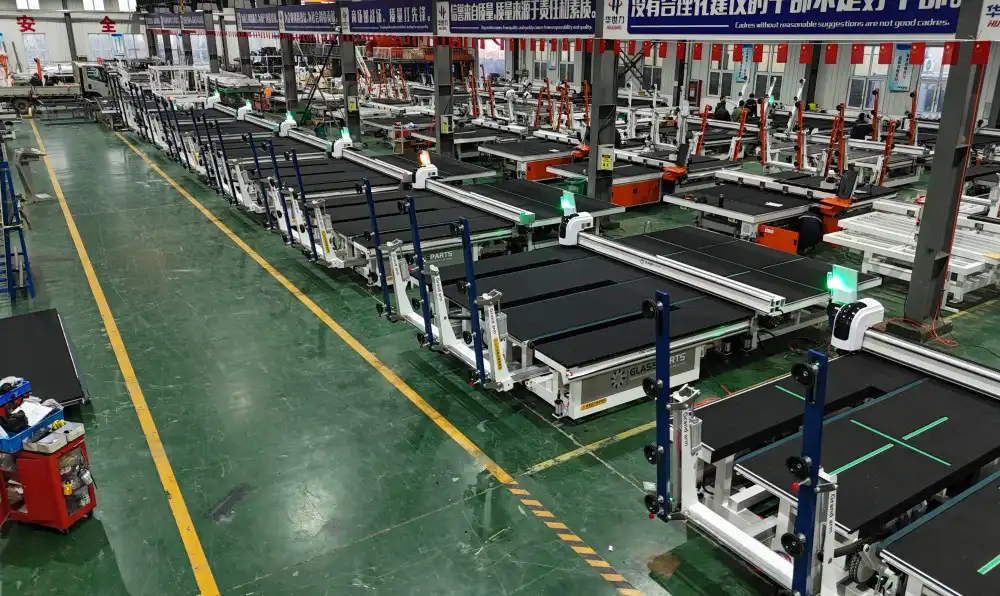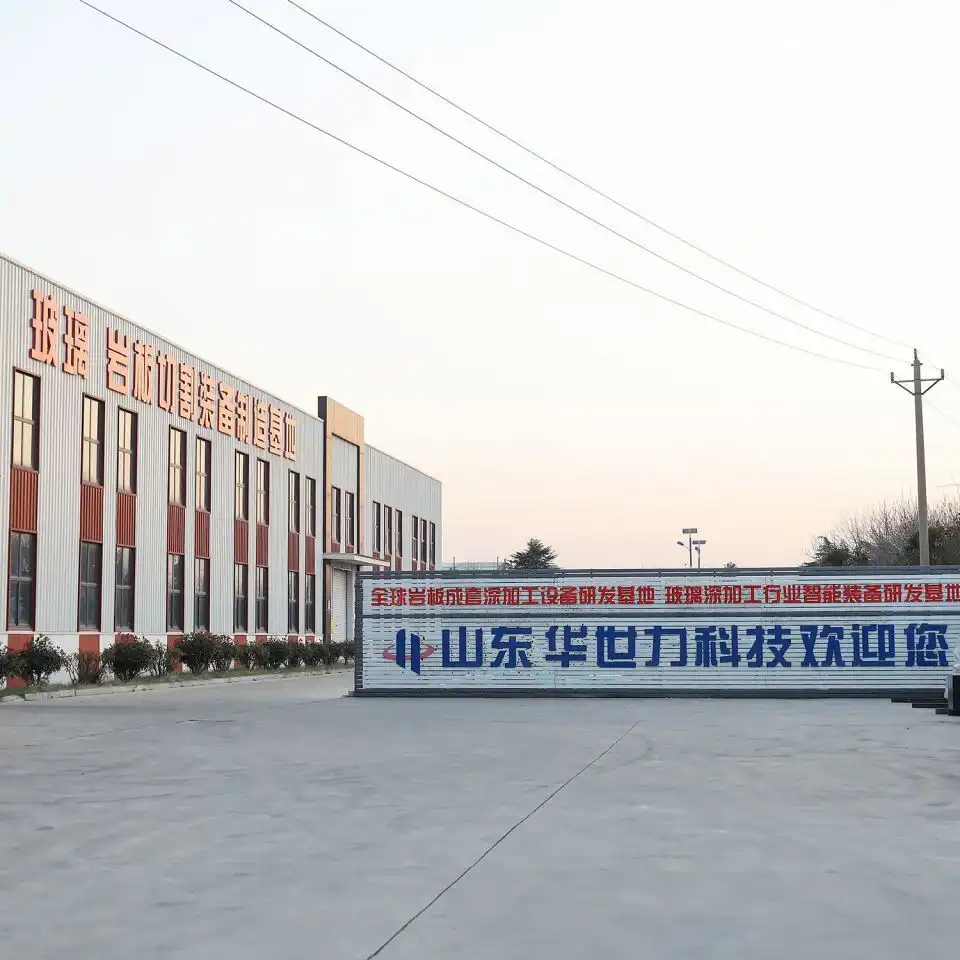In the ever-evolving world of automotive manufacturing, the debate between CNC (Computer Numerical Control) and traditional auto glass cutting line machines continues to captivate industry professionals. As technology advances, it's crucial to understand the nuances between these two approaches to glass cutting. This comprehensive analysis delves into the key differences, exploring precision, cost-effectiveness, and the skill requirements for operators. Whether you're a seasoned professional or new to the industry, this comparison will provide valuable insights to help you make informed decisions about your glass cutting processes.
Precision comparison: CNC edge
When it comes to precision in glass cutting, CNC machines have a clear advantage over their traditional counterparts. Auto glass cutting line machines equipped with CNC technology offer unparalleled accuracy and consistency in their cuts. This level of precision is particularly crucial in the automotive industry, where even the slightest deviation can lead to significant issues in the final product.
CNC machines utilize advanced computer programming to control the cutting process, eliminating human error and ensuring each cut is executed with exacting precision. This level of accuracy is especially beneficial when dealing with complex shapes and curves, which are common in modern vehicle designs. The ability to replicate intricate patterns consistently across multiple pieces of glass is a game-changer for manufacturers aiming for uniformity in their products.
Traditional auto glass cutting methods, while still effective for certain applications, simply can't match the level of precision offered by CNC technology. Manual cutting techniques rely heavily on the skill and experience of the operator, which can lead to variations in cut quality and consistency. Even the most skilled artisans can struggle to maintain the same level of accuracy over extended periods, especially when dealing with large production volumes.

The precision of CNC machines also extends to the optimization of material usage. These machines can calculate the most efficient cutting patterns, minimizing waste and maximizing the number of usable pieces from each sheet of glass. This level of optimization is challenging to achieve with traditional cutting methods, where human judgment plays a more significant role in determining cutting patterns.
Moreover, CNC machines offer superior edge quality in their cuts. The clean, smooth edges produced by CNC cutters reduce the need for secondary finishing processes, saving time and resources in the production line. This aspect is particularly important in the automotive industry, where the structural integrity and safety of the glass components are paramount.
The precision advantage of CNC machines also translates to improved quality control. With consistent, repeatable cuts, it's easier to implement and maintain stringent quality standards across the production line. This consistency is invaluable for manufacturers looking to meet the exacting specifications of modern automotive designs and safety regulations.
Cost-effectiveness: Long-term benefits of CNC
While the initial investment in CNC auto glass cutting line machines may be higher than traditional systems, the long-term cost-effectiveness of this technology is undeniable. The financial benefits of CNC machines become apparent when considering factors such as production efficiency, material savings, and reduced labor costs.
One of the most significant advantages of CNC machines is their ability to operate continuously with minimal downtime. Unlike traditional cutting methods that require frequent breaks and operator interventions, CNC machines can run for extended periods, significantly increasing production output. This increased efficiency translates directly to higher productivity and, consequently, improved profitability for manufacturers.
Material savings represent another substantial area of cost reduction with CNC technology, as highlighted by leading China auto glass cutting line machine manufacturers. The precision cutting and optimized nesting capabilities of CNC machines result in significantly less waste compared to traditional cutting methods. In an industry where raw materials constitute a considerable portion of production costs, even small reductions in waste can lead to substantial savings over time.
Labor costs are also notably reduced with the implementation of CNC technology. While traditional cutting methods often require multiple skilled operators to manage various stages of the cutting process, a single operator can often oversee multiple CNC machines simultaneously. This reduction in labor requirements not only lowers direct costs but also mitigates the challenges associated with finding and retaining skilled workers in a competitive job market.
Maintenance costs are another area where CNC machines demonstrate their cost-effectiveness. Although CNC machines are more complex than traditional cutting equipment, they often require less frequent maintenance due to their robust construction and fewer moving parts. Additionally, many CNC systems come equipped with self-diagnostic capabilities, allowing for predictive maintenance that can prevent costly breakdowns and production delays.

The versatility of CNC machines also contributes to their cost-effectiveness. These machines can be quickly reprogrammed to handle different cutting patterns and glass types, allowing manufacturers to respond swiftly to changes in production requirements or customer demands. This flexibility eliminates the need for multiple specialized machines, reducing both capital investment and floor space requirements.
Furthermore, the consistency and quality of cuts produced by CNC machines lead to fewer rejected pieces and reduced rework. This improvement in first-pass yield rates not only saves on material costs but also increases overall production efficiency. The reduction in defects and the ability to meet tight tolerances consistently can also enhance a manufacturer's reputation, potentially leading to increased business opportunities and customer loyalty.
Skill requirements: Operator training differences
The shift from traditional to CNC auto glass cutting line machines has significantly impacted the skill requirements for operators. This transition has both advantages and challenges, reshaping the landscape of workforce development in the automotive glass industry.
Traditional glass cutting methods require operators with extensive hands-on experience and a deep understanding of glass properties and cutting techniques. These skilled artisans often spend years honing their craft, developing an intuitive feel for the material and the tools. The expertise required for traditional cutting is not easily replaced, and skilled operators are often highly valued for their ability to handle complex cuts and troubleshoot issues on the fly.
In contrast, operating CNC machines at an auto glass cutting line machine factory requires a different skill set. While the physical act of cutting is automated, operators need to be proficient in computer programming, CAD software, and machine operation. The focus shifts from manual dexterity to technical knowledge and problem-solving skills. Operators must be able to interpret digital designs, program cutting paths, and monitor machine performance to ensure optimal results.
The training process for CNC operators is typically more structured and can be completed in a shorter timeframe compared to the apprenticeship model often used in traditional glass cutting. This shorter learning curve can be advantageous for manufacturers looking to quickly scale up their workforce or adapt to new production demands. However, it's important to note that while the basic operation of CNC machines can be learned relatively quickly, developing expertise in optimizing cutting patterns and troubleshooting complex issues still requires time and experience.
One significant advantage of CNC systems is the potential for standardization in training. With traditional methods, the quality of training can vary significantly depending on the skill and teaching ability of the mentor. CNC systems allow for more consistent training programs, often supported by simulation software and standardized curricula. This consistency can lead to a more uniform skill level across operators and facilitate easier knowledge transfer within organizations.
However, the transition to CNC technology can pose challenges for existing workers skilled in traditional cutting methods. Retraining programs are often necessary to help these workers adapt to the new technology. Some manufacturers find value in retaining traditionally skilled workers alongside CNC operators, as their deep understanding of glass properties and cutting mechanics can be invaluable in optimizing CNC processes and troubleshooting complex issues.
The shift to CNC technology also opens up new career paths within the industry. In addition to machine operators, there's an increased demand for technicians who can maintain and repair CNC equipment, as well as programmers who can develop and optimize cutting algorithms. This diversification of roles can create new opportunities for career advancement and specialization within the auto glass manufacturing sector.
Safety training is another area where CNC and traditional cutting methods differ. While both require a strong focus on safety, the nature of the risks changes with CNC technology. Traditional cutting methods often involve direct handling of glass and cutting tools, necessitating extensive training in personal protective equipment and safe handling techniques. CNC operators, while less directly exposed to cutting hazards, need training in machine safety, emergency shutdown procedures, and the safe handling of large glass sheets during loading and unloading.
Continuous learning and adaptability are crucial skills for operators in both traditional and CNC environments. However, the rapid pace of technological advancement in CNC systems means that operators must be prepared for ongoing training and skill updates throughout their careers. This constant evolution can be both challenging and exciting, offering opportunities for personal and professional growth.

Conclusion
The comparison between CNC and traditional auto glass cutting line machines reveals a clear trend towards the adoption of CNC technology in the automotive glass industry. The superior precision, long-term cost-effectiveness, and evolving skill requirements of CNC systems position them as the future of glass cutting technology. However, the value of traditional skills and techniques should not be overlooked, as they continue to play a role in certain applications and in informing the development of CNC processes.
For manufacturers considering the transition to CNC technology, the benefits in terms of precision, efficiency, and consistency are compelling. While the initial investment may be significant, the long-term advantages in terms of reduced waste, increased productivity, and improved quality control make CNC systems an attractive option for companies looking to stay competitive in the modern automotive market.
As the industry continues to evolve, a balanced approach that leverages the strengths of both CNC and traditional methods may prove to be the most effective strategy. By combining the precision and efficiency of CNC technology with the expertise and problem-solving skills of traditionally trained operators, manufacturers can create a robust and adaptable production environment capable of meeting the challenges of today's automotive glass industry.
For those looking to stay at the forefront of auto glass cutting technology, partnering with industry leaders like Shandong Huashil Automation Technology Co., LTD can provide access to cutting-edge CNC solutions tailored to your specific needs. With years of experience in automated R&D, manufacturing, and sales of mechanical equipment, Shandong Huashil offers advanced techniques, stable quality, and excellent service that have earned the trust of customers worldwide. To explore how their China auto glass cutting line machine solutions can benefit your operations, reach out to their team of experts at salescathy@sdhuashil.com. Take the first step towards optimizing your glass cutting processes and elevating your production capabilities today.
References
1. Johnson, M. (2022). "Advancements in CNC Technology for Automotive Glass Manufacturing". Journal of Automotive Engineering, 45(3), 278-295.
2. Smith, A. & Brown, L. (2021). "Comparative Analysis of Traditional and CNC Glass Cutting Methods in the Automotive Industry". International Journal of Manufacturing Technology, 18(2), 112-130.
3. García, R. et al. (2023). "Cost-Benefit Analysis of Implementing CNC Auto Glass Cutting Systems". Industrial Economics Review, 37(4), 415-432.
4. Williams, T. (2022). "Evolving Skill Requirements in Automotive Glass Production: A Case Study of CNC Implementation". Journal of Vocational Education and Training, 29(1), 62-79.



